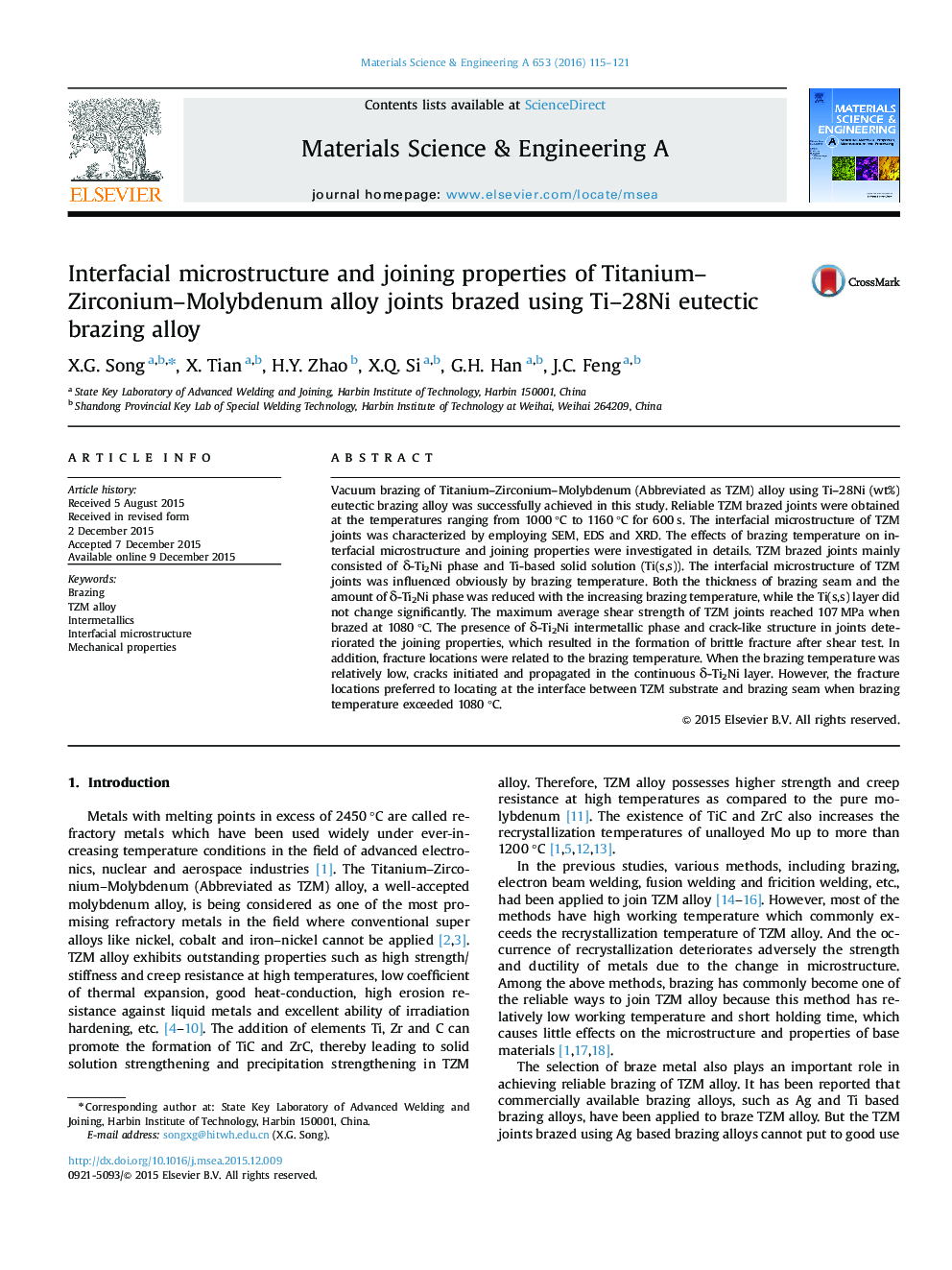| Article ID | Journal | Published Year | Pages | File Type |
|---|---|---|---|---|
| 1573789 | Materials Science and Engineering: A | 2016 | 7 Pages |
Abstract
Vacuum brazing of Titanium-Zirconium-Molybdenum (Abbreviated as TZM) alloy using Ti-28Ni (wt%) eutectic brazing alloy was successfully achieved in this study. Reliable TZM brazed joints were obtained at the temperatures ranging from 1000 °C to 1160 °C for 600 s. The interfacial microstructure of TZM joints was characterized by employing SEM, EDS and XRD. The effects of brazing temperature on interfacial microstructure and joining properties were investigated in details. TZM brazed joints mainly consisted of δ-Ti2Ni phase and Ti-based solid solution (Ti(s,s)). The interfacial microstructure of TZM joints was influenced obviously by brazing temperature. Both the thickness of brazing seam and the amount of δ-Ti2Ni phase was reduced with the increasing brazing temperature, while the Ti(s,s) layer did not change significantly. The maximum average shear strength of TZM joints reached 107 MPa when brazed at 1080 °C. The presence of δ-Ti2Ni intermetallic phase and crack-like structure in joints deteriorated the joining properties, which resulted in the formation of brittle fracture after shear test. In addition, fracture locations were related to the brazing temperature. When the brazing temperature was relatively low, cracks initiated and propagated in the continuous δ-Ti2Ni layer. However, the fracture locations preferred to locating at the interface between TZM substrate and brazing seam when brazing temperature exceeded 1080 °C.
Related Topics
Physical Sciences and Engineering
Materials Science
Materials Science (General)
Authors
X.G. Song, X. Tian, H.Y. Zhao, X.Q. Si, G.H. Han, J.C. Feng,
